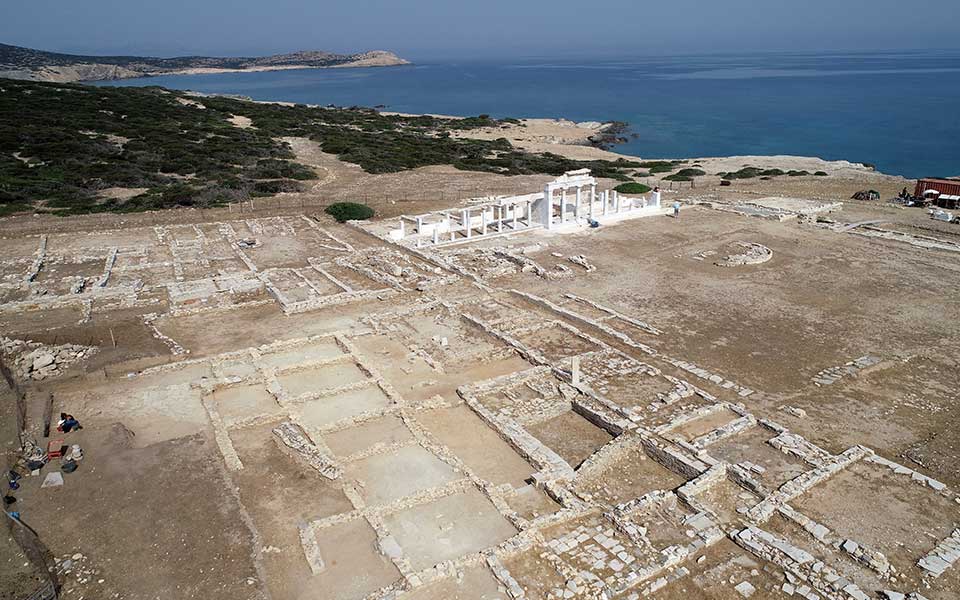Located 700 m southwest of Antiparos, the tiny, uninhabited island of Despotiko is packed with more antiquities per square meter than just about anywhere else in Greece. This extraordinary island, known as the “Other Delos,” was once home to an important sanctuary dedicated to the cult of Apollo, dating back to the late Archaic period (6th-early 5th century BC).
The sheer size and scale of the sanctuary complex, including a main temple, an adjacent stoa (a long, covered portico with rooms behind) for ceremonial dining, and a large courtyard has led the island’s chief excavator, archaeologist Yannos Kourayos, to believe it may have been even bigger than the sanctuary on nearby Delos.
Painstaking research by Kourayos and members of the Ephorate of Antiquities of the Cyclades over the course of more than 20 years has revealed countless archaeological treasures related to the island’s role as a cult sanctuary, one of at least 22 similar island shrines in the Cyclades, but more recent excavations have unearthed tantalizing clues as to the island’s other role as an important naval base.
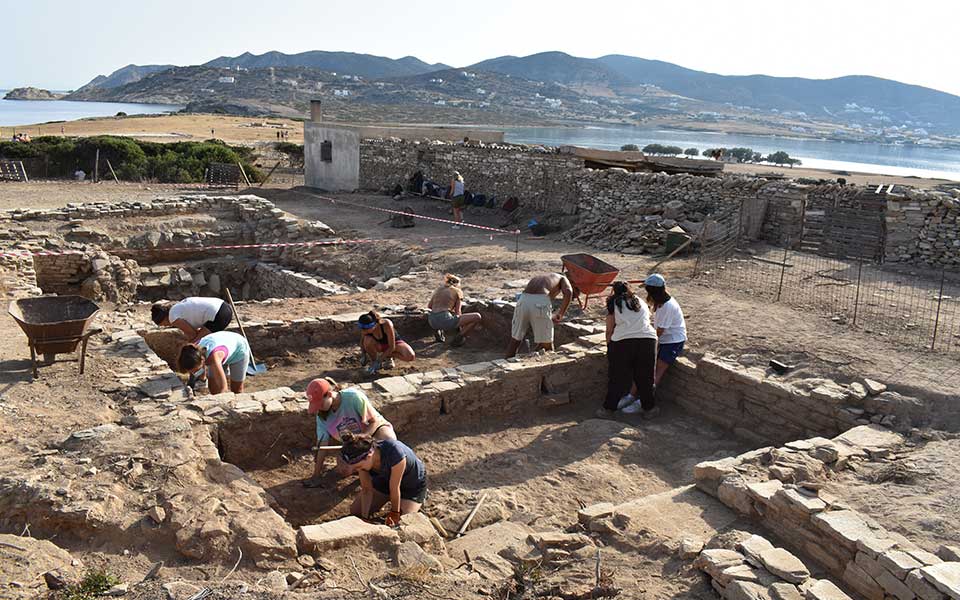
Excavations in 2021
In spite of the challenges and restrictions due to the ongoing coronavirus pandemic, Kourayos and his team returned to the island this summer to continue work in an area of the site near the shepherd’s paddock, where, in 2020, a large rectangular construction was discovered.
Excavations this season revealed it to be part of a complex water collection and treatment system, one that would have served the nearby port, supplying ships’ crews with much-needed potable water on their voyages criss-crossing the Aegean.
“The sanctuary of Apollo in Despotiko was a large naval base for the supply of ships in the center of the Cyclades and had a huge water supply system,” Kourayos says of the discovery.
The main water tank, a sturdy construction of 7.5 m x 5.5 m with a depth of 3.8 m, would have been in use during the Archaic and Classical periods, the heyday of the sanctuary. Various alterations were made in later periods, but its original design included two smaller filtration tanks, discovered this year.
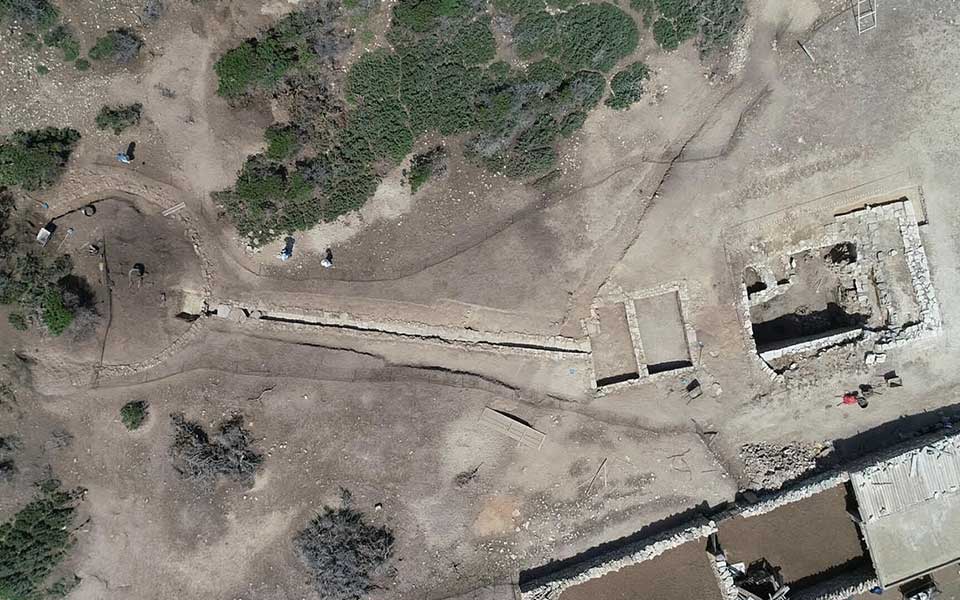
© Hellenic Ministry of Culture and Sports
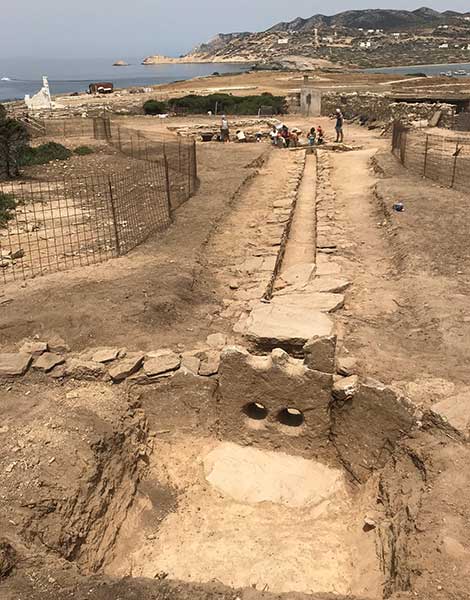
© Hellenic Ministry of Culture and Sports
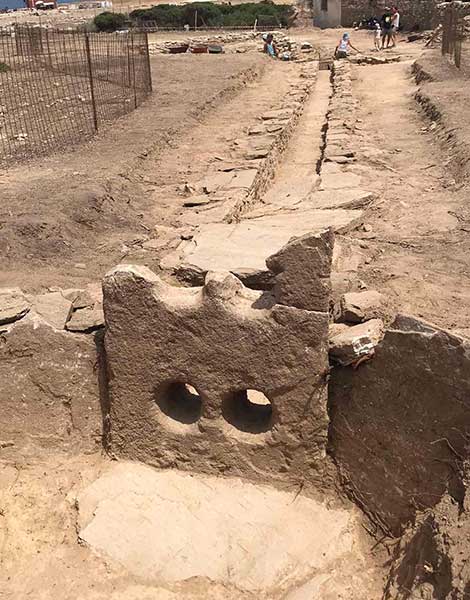
© Hellenic Ministry of Culture and Sports
Water treatment system
The filtration tanks comprise of a rectangular bilateral construction 6 m x 4 m divided into two spaces. The floor of the northern section is covered in mortar, with five triangular openings in its southern wall, through which water would have been channeled from the adjacent southern section. Inside the latter were found tiles and clay pipes.
Excavations have revealed that the filtration tanks were connected to a stone-built pipeline, 25 m in length, that follows the downward slope of the terrain. At the end lies a massive circular tank with a diameter of 11 m. The construction at the point where it joins the pipeline is porous with four holes in two horizontal rows. Of these, the two that were intended to control the flow of water are still preserved.
Kourayos believes the circular tank served as the main reservoir for the collection of water, connected via the pipeline to the filtration tanks. Large slate slabs were found to pave the bottom of the pipeline, demonstrating the Despostiko was served be a well-organized system for collecting and refining water.
Kourayos also believes the water system not only served the ships arriving at the naval base but also the sanctuary of Apollo, providing the temple priests and visiting pilgrims with a ready supply of water for ritual feasting. Despotiko enabled the inhabitants of nearby Paros, the builders of the sanctuary, to consolidate their power and influence in this part of the Aegean, and the water system would have enabled a degree of self-sufficiency in the face of outside threats:
“Despotiko is associated with stories of political domination, revenge and blood. The Parians were not only punished by the Athenians for siding with the Persians [in the Greco-Persian wars, 499-449 BC] but their island was plundered because of its enormous wealth, namely the famous Parian marble. There was also the enduring threat of piracy,” Kourayos explains.
Regarding the sheer scale and splendour of the sanctuary, he adds: “The Parians had money. The gift of Parian land was the famous marble and the people of Paros wanted to show their wealth which they channeled by building public buildings.”
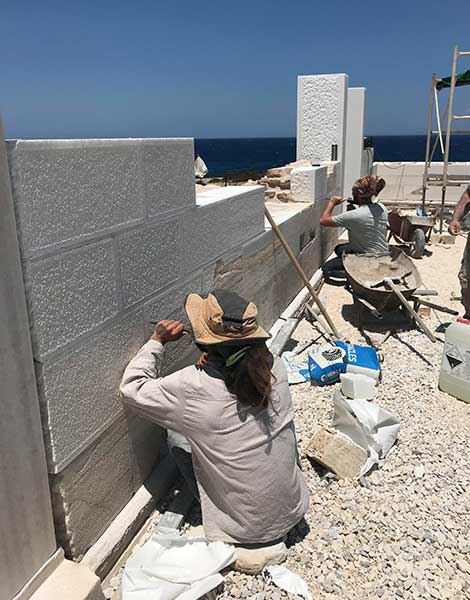
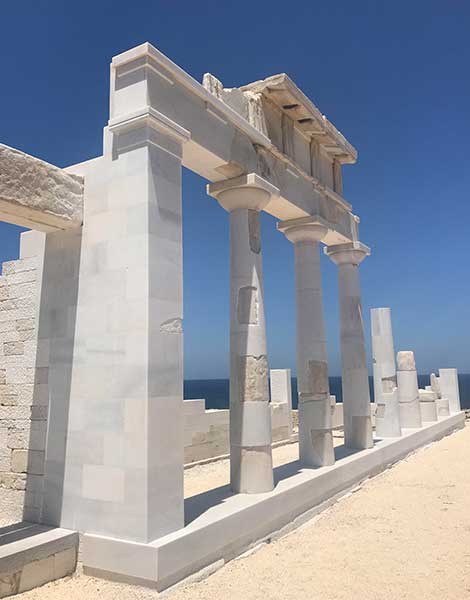
Restorations
This season also saw the completion of the restoration works on the Archaic temple and the adjacent stoa, used in antiquity for ritual feasting. The heart of the cult complex is now clearly visible from all directions, offering visitors arriving by boat a spectacular three dimensional view of the landmark monuments.
Further restorations on the sanctuary sites are planned for later this year, and the necessary visitor facilities are expected to be put in place in the near future.
The month-long excavation and restorations works (June 2-July 2) were ably assisted by 20 American students of the College Year in Athens (CYA) and seven students from the University of Ioannina. Kourayos believes next season’s excavation will reveal another pipeline and more clues related to the design and function of the water system.
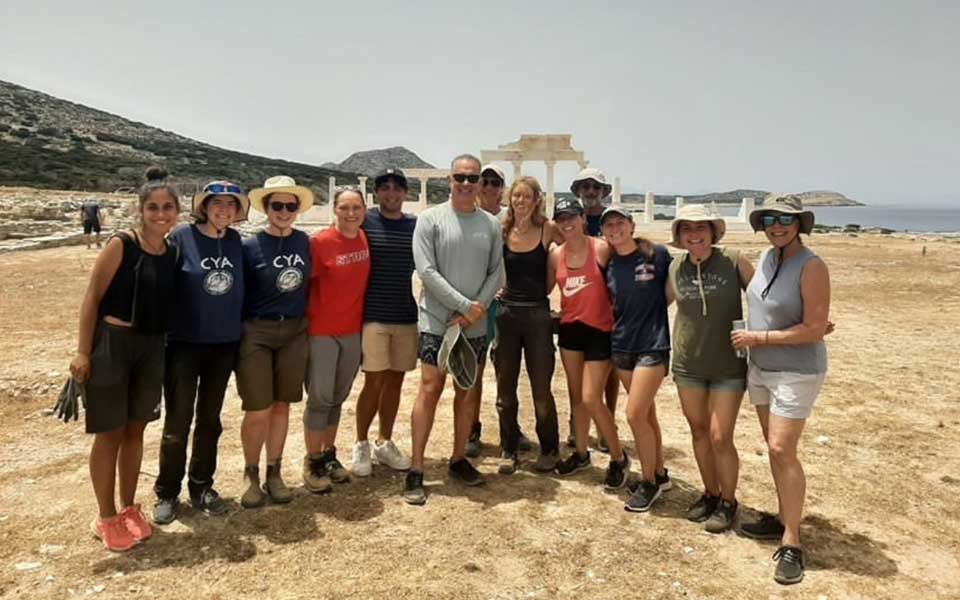
Celebrity visitors
This year’s team were in for a surprise when Hollywood actor and filmmaker Tom Hanks and his Greek-American actress-producer wife Rita Wilson visited the excavations in June. This was not the first time the award-winning actor had visited the site:
“Years ago he helped with the excavation for two weeks, as a member of the team. It was shortly before the filming of The Da Vinci Code (2006) based on Dan Brown’s book. The protagonist wanted to engage with the experience of an excavation and the feelings of the archaeologist who is researching. In fact, he knew from slow work, he knew how to dig,” says Kourayos.
During this year’s visit, the actor expressed interest in the sanctuary’s complex water system, and discussed the findings with members of the excavation team. Posing for photos with the students, the celebrity couple were also impressed with speed of the restoration works.

